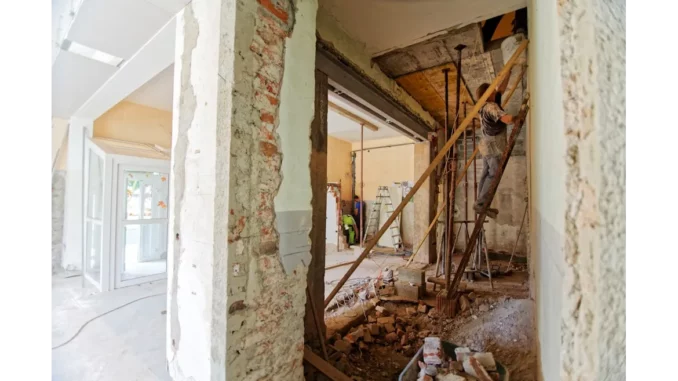
When it comes to the intricate world of home conversions and renovations, adhering to the NHBC Technical Standards is paramount. These standards not only ensure quality and safety but also help in streamlining the approval process for projects. To better understand the nuances of these guidelines, I sat down with Oliver Harris, a seasoned architect specialising in residential conversions and renovations. Our discussion shed light on the importance of these standards and how they guide professionals in delivering projects that meet the NHBC’s stringent requirements.
Focus360 Energy: property compliance services – pre-planning to post-construction. Learn more.
Oliver welcomed me into his bustling office, a space filled with architectural models and sketches, offering a glimpse into the creative process behind his projects. As we settled down, I asked him to share his journey into the world of NHBC Standards.
“To be honest,” Oliver began, “when I first started, the NHBC Technical Standards felt like an overwhelming set of rules. But over time, I realised they are more of a guide—a blueprint for ensuring quality and safety in our projects.”
For Oliver, the NHBC Standards serve as a crucial roadmap, especially for conversions and renovations that are often fraught with unique challenges. “Every old building has its secrets,” he said with a smile. “And the NHBC Standards help us navigate these mysteries by providing a clear framework.”
The NHBC Standards for Conversions and Renovations outline the type of projects that are acceptable. Oliver explained that understanding these parameters is essential for architects and builders alike. “You need to know what’s considered acceptable from the get-go,” he emphasised. “This saves time and resources, ensuring that our efforts align with NHBC expectations.”
One of the standout aspects of the NHBC Standards is the focus on surveys. Oliver elaborated on their significance: “A thorough survey is the foundation of any good renovation or conversion project. The Standards guide us on the scope of these surveys, highlighting what needs to be examined and documented.”
He recounted a recent project involving a centuries-old townhouse. “The NHBC Standards were instrumental in helping us decide the extent of structural assessments needed. They ensure that nothing is left to chance, from the integrity of the existing structure to the materials used for renovations.”
Oliver noted that the NHBC’s systematic approach to inspections and surveys is designed to uphold high standards of construction. “They encourage a culture of diligence. Each survey is an opportunity to understand how a building stands up to modern requirements and what needs to be adapted or retained.”
The conversation shifted to the challenges involved in meeting these standards. Oliver was candid about the complexities faced by professionals in the field. “It’s not always straightforward,” he admitted. “There are times when the existing structure and modern requirements clash. That’s where creativity and compliance must work hand in hand.”
However, he was quick to add that the NHBC Standards offer flexibility within their framework. “They are not rigid rules but a set of adaptable guidelines. The NHBC is keen on keeping these standards relevant, which is why they regularly update them in line with regulatory changes and industry needs.”
Oliver highlighted the collaborative efforts between the NHBC and industry stakeholders. “The continuous improvement of these standards is a testament to their commitment. They listen to feedback from the field and adapt accordingly, which is incredibly beneficial for professionals like myself.”
As our conversation drew to a close, I asked Oliver for advice to those embarking on conversion and renovation projects under the NHBC umbrella. “Embrace the standards,” he advised. “They might seem daunting at first, but they are your allies. They ensure your work is not only compliant but also of the highest quality.”
He concluded with a thoughtful remark, “At the end of the day, it’s about building homes that stand the test of time, and the NHBC Standards are essential in achieving that goal.”
Our discussion with Oliver Harris provided a comprehensive look into how the NHBC Technical Standards serve as a guiding light for architects and builders navigating the complex landscape of conversions and renovations. By offering clear guidelines and encouraging continuous improvement, these standards play a pivotal role in championing high-quality homes and protecting homeowners.
Emily Thompson


Be the first to comment